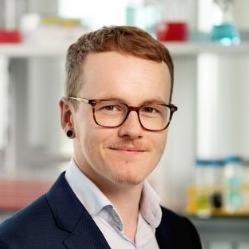Advanced Dynamic Cell and Tissue Culture, Volume 2
A special issue of Bioengineering (ISSN 2306-5354).
Deadline for manuscript submissions: closed (15 March 2019) | Viewed by 23819
Special Issue Editors
Interests: 3D cell culture; bioreactors; tissue engineering; biomaterials; stem cells; cell expansion and differentiation; dynamic cultivation; hypoxia
Special Issues, Collections and Topics in MDPI journals
Special Issues, Collections and Topics in MDPI journals
Interests: biotechnology; bioengineering; bioprocess engineering; 3D cell culture; tissue engineering; bioreactors; stem cell manufacturing; stem cells; biomaterials; scaffolds
Special Issues, Collections and Topics in MDPI journals
Special Issue Information
Dear Colleagues,
“Classical” standard cell cultivation is still performed under static conditions on 2 D plastic surfaces in ambient atmosphere. These conditions do not mimic physiological in vivo conditions for human primary cells including stem and progenitor cells. For improving cell culture conditions and thus functionality of cells and tissues the expansion and differentiation should be performed in scalable bioreactors in/or on 3 D scaffolds under dynamic conditions. These bioreactor based bioprocesses can be automated and controlled resulting in optimized transport of nutrients and metabolic waste as well as in monitoring and control of the tissue microenvironment.
The current Special Issue wants to highlight new strategies for the development of bioprocesses for organ specific cell cultivation as well as stem cell expansion and differentiation. New designs for 3 D cell culture approaches including co-cultures and scalable systems shall be presented and applications are welcome from the whole field of cell based therapies and in vitro tests. This issue is open for papers addressing:
• 3 D biomaterials for cell and tissue culture
• Bioreactor design and optimization including automation
• Microfluidics (e.g. organ on a chip)
• Stem cell expansion and differentiation including tissue engineering approaches
• Application of physiological conditions including mechanical stimulation
• Sensors and monitoring devices in 3 D cell cultures
We look forward to receiving your contributions for this Special Issue.
Prof. Dr. Cornelia Kasper
Dr. -Ing. Jan Hansmann
Dr. Dominik Egger
Guest Editors
Manuscript Submission Information
Manuscripts should be submitted online at www.mdpi.com by registering and logging in to this website. Once you are registered, click here to go to the submission form. Manuscripts can be submitted until the deadline. All submissions that pass pre-check are peer-reviewed. Accepted papers will be published continuously in the journal (as soon as accepted) and will be listed together on the special issue website. Research articles, review articles as well as short communications are invited. For planned papers, a title and short abstract (about 100 words) can be sent to the Editorial Office for announcement on this website.
Submitted manuscripts should not have been published previously, nor be under consideration for publication elsewhere (except conference proceedings papers). All manuscripts are thoroughly refereed through a single-blind peer-review process. A guide for authors and other relevant information for submission of manuscripts is available on the Instructions for Authors page. Bioengineering is an international peer-reviewed open access monthly journal published by MDPI.
Please visit the Instructions for Authors page before submitting a manuscript. The Article Processing Charge (APC) for publication in this open access journal is 2700 CHF (Swiss Francs). Submitted papers should be well formatted and use good English. Authors may use MDPI's English editing service prior to publication or during author revisions.
Keywords
- Bioreactors
- 3 D Cell Culture
- Tissue Engineering
- Microfluidics/Organ on a chip
- Stem Cells
- Biomaterials
- Automation








